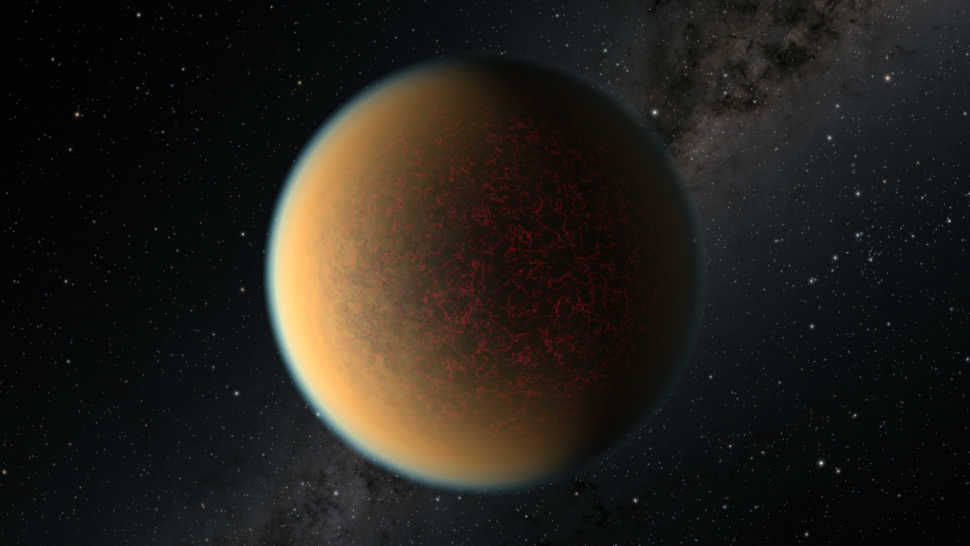This alien planet is making its own atmosphere, could be an alternative!
The Hubble Space Telescope made the find.
Scientists think they’ve spied an alien world that lost its atmosphere .
According to a new analysis of Hubble Space Telescope observations gathered in 2017 of a planet dubbed GJ 1132 b. The world tightly orbits a red dwarf star located about 41 light-years from Earth, completing one circle every 1.5 Earth days and soaking up lots of stellar radiation in the process. And now, scientists think they see signs of a secondary atmosphere, one that was born of the exoplanet itself long after the planet formed.
“It’s super exciting because we believe the atmosphere that we see now was regenerated, so it could be a secondary atmosphere,” study co-author Raissa Estrela, an exoplanet scientist at NASA’s Jet Propulsion Laboratory (JPL) in California.

“We first thought that these highly irradiated planets could be pretty boring because we believed that they lost their atmospheres,” Estrela said. “But we looked at existing observations of this planet with Hubble and said, ‘Oh no, there is an atmosphere there.'”
An atmosphere is a tricky thing to hang onto. Earth’s is held fast to the planet, mostly by our magnetic field, but other worlds aren’t so lucky. Mars once had a thick atmosphere, for example, but most of it was stripped away after the planet lost its global magnetic field about 4 billion years ago.
Something similar can happen with exoplanets. Scientists think the result is sometimes dramatic, rapidly turning gassy planets smaller than Neptune into bare worlds.
This atmospheric loss can produce a planet about the same size as Earth, but one with a very different history than that of our home world. “How many terrestrial planets don’t begin as terrestrials?” Mark Swain, lead author of the new research and an exoplanet scientist at JPL, said in the same statement.
The researchers think that GJ 1132 b took things one step further. After the planet lost its hydrogen- and helium-rich basic atmosphere, it became a bare world. But the Hubble observations suggest that, today, GJ 1132 b is swathed in a mix of hydrogen, hydrogen cyanide, methane, and aerosol-rich haze that may resemble Earth’s smog.
To understand what’s happening in the system, the scientists are eyeing GJ 1132 b’s close relationship with its star, which tugs the world enough to keep the same side of the planet facing toward it at all times, mimicking how the moon orbits Earth.

But because of the particulars of the planet’s orbit, the researchers suspect that in this case, the star pulls strongly enough on GJ 1132 b to dramatically heat the planet. The result could be a volcanically active world, the researchers concluded.
The strange atmosphere, then, could be born of gases leaching out of molten rock in the planet. In particular, the scientists paint a portrait of a molten world covered in a thin crust that may be cracked like an eggshell. Such cracks, created by the tug of the star on the planet, would allow gas to seep out, creating a second atmosphere.
The scientists hope that NASA’s powerful James Webb Space Telescope, currently scheduled to launch this fall, will be able to see the surface of GJ 1132 b in infrared light, which is tied to temperature.
“If there are magma pools or volcanism going on, those areas will be hotter,” Swain said. “That will generate more emission, and so they’ll be looking potentially at the actual geologic activity — which is exciting!”



